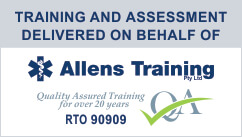First Aid for Children HLTAID004
Manly Daily First Aid Tips – Book a public or private first aid or CPR training course. For parents with young children or child care workers please read the below and have the training for the unexpected.
Simple Instruction offers First Aid and CPR training at the Dee Why RSL on a regular basis.
NORTHERN BEACHES
How to deal with common accidents
Tips for parents when littlies are in the wars
WITH discovery and exploration in babies and children come falls and bumps.
Here’s what to do if one of these common accidents happens to your child.
BURNS AND SCALDS
PUT the burnt area under running water from the cold tap as soon and leave it there for at least 20 minutes.
Never place anything else on the burn – ice, creams and butter do not help. Get medical help if the burn is bigger than a 20 cent piece, looks raw or blistered or is on the face, neck or genitalia.
CHOKING
CHECK first if your child can breathe, cough or cry and, if so, see if they can dislodge the item by coughing, clearing the mouth or lying them forward.
For small children, tip them upside down. If this does not work, call 000.
POISONING
SIGNS of poisoning can include stomach pains and vomiting, drowsiness, trouble breathing, change of skin colour, blurred vision or even collapse.
Don’t give your child anything to eat or try to make them vomit. Pick up the poisons container, if you have it, and call the Poisons Information Centre on 13 1126.
TOOTH KNOCKED OUT
IF A baby tooth gets knocked out, there’s little chance of saving it, but you should always go straight to the dentist regardless.
In most cases, baby teeth come out because they are loose. See your dentist to ensure there are no cracked pieces of tooth left that can potentially cause infection and damage to the tooth that will come through.
If an adult tooth is knocked out it may reattach to the bone, but this is less likely with very young children. However, still retrieve the fallen tooth and either put it in milk or get your child to hold it in their mouth inside their cheek until you get to the dentist.
NEAR DROWNING
IF YOUR child is unconscious, unresponsive and not breathing, start resuscitation if you know how.
Any first aid you know is better than nothing. Call 000 and the operators can give you advice on how to administer first aid while you wait for the paramedics to arrive.
OBJECTS IN EAR, NOSE
DON’T try to remove a small object stuck in your child’s ear or nose as you may make the situation worse.
Go straight to your doctor to have it removed safely.
POKE IN THE EYE
A FINGER, a fork or a tree branch can cause damage if poked into a child’s eye.
Keep the child calm and check if they can open their eye. If the eye is red, sore or irritated, go to a doctor.
BUMPS AND FALLS
APPLY ice or a cold pack immediately to any bruise, bump or swelling.
If your child is in extreme pain, can’t move a limb or is unable to put pressure on an area, they may have fractured a bone. See a doctor.
JAMMED FINGERS
IF THERE’S bleeding, apply pressure and if there’s bruising, apply ice. If they are in extreme pain and can’t move the joint, you will need to get medical help.
Dr Ken Peacock, head of general medicine, The Children’s Hospital at Westmead
